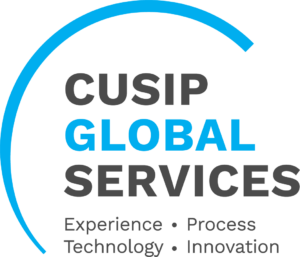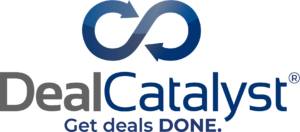November 17, 2023 - The International Organization of Securities Commissions (IOSCO) has launched a consultation report Leveraged Loans and CLOs Good Practices for Consideration as we previously noted. IOSCO recognizes that “the good practices do not comprise either standards or recommendations as per IOSCO’s taxonomy;” rather they are designed to support market participants in their decision making when operating in the leveraged loan and CLO markets. The Good Practices are comprised of 12 proposed measures relating to five key themes: 1) origination and refinancing based on sound business premise; 2) EBITDA and loan documentation transparency; 3) strengthening alignment of interest from loan origination to end investors; 4) addressing interests of different market participants through the intermediation chain; and 5) disclosure of information on an ongoing basis. The proposed Good Practices themselves are largely – though not entirely – reasonable on their face; however, certain of the Practices and the supporting commentary fail to accurately reflect long-standing market dynamics. We note that the consultation report purports to cover all leveraged lending – broadly syndicated lending (BSL) and private credit – but certain Good Practices seem only applicable in a BSL context. Below, we explore some of our observations with respect to the U.S. BSL market. A separate look at the consultation report’s treatment of CLOs will follow.
- Europe vs. U.S.: The consultation states that the development of the Good Practices is based on extensive industry outreach through surveys and roundtables starting in 2021. In June 2022, the second phase of industry roundtables began with broad representation of leveraged lending stakeholders (ex-sponsors). This outreach further included engagement with trade associations, which have guides for leveraged lending term sheet completeness and a review of media coverage and publications. The LSTA was not involved in this process and it is not clear that U.S. market participants were involved, although there was broad engagement with European market participants. As further explained below, the Good Practices do not square with the U.S. leveraged lending market which may be a result of more European-focused engagement.
- Purview of U.S. Prudential Regulators: Unlike in Europe where the relevant regulatory bodies are represented on the IOSCO board, the relevant authorities for the leveraged lending market – the OCC, Fed and FDIC – are not represented. In addition to the Good Practices raising the question of appropriateness of guidance from regulatory bodies other than these three, they seek to 1) cover ground already addressed by the Leveraged Lending Guidance (e.g., debt repayment capacity, modeling); 2) go further than existing regulatory guidance (e.g., dividend recaps, EBITDA add-backs, and enterprise value methodologies); and 3) are at odds with existing regulatory guidance (e.g., underwriting entities are to demonstrate they have aligned their interests with leveraged lending investors, through risk retention or other means, and risk management).
- Sophistication of Lenders: Lenders are sophisticated parties that knowingly and explicitly make their own credit decisions and can request the diligence they need to do so. The consultation’s commentary undermines the sophistication of lenders and questions lenders’ ability to adequately make credit decisions. “[T]erm sheets lack sufficient standardization in terms of content and sufficiency of disclosures in respect of material terms investors rely on to make informed decisions. According to research…not only is there a lack of detail on disclosed terms but in some cases some material terms are omitted and subsequently included in the loan documentation.” [1] The impact, according to the commentary, is that “these practices are impacting investors’ ability to appropriately assess risk during the syndication process and are undermining the proper functioning of the market.” The preparation of such detailed risk disclosures is characteristic of a bond offering, as required by federal securities laws. Arranging a syndicated loan – which is not a security under federal securities laws –is a distinct practice.
- Misunderstanding of Arranger Role. The Good Practices and commentary would require the arranger to perform activities outside its circumscribed role. For instance, IOSCO encourages “risk factor disclosures” to be considered for inclusion in loan documentation to support transparency. “It is considered good practice for such risk factor disclosures to capture all the risks that could conceivably occur.”[2] Proposed Measure 6 is perhaps the best example of the incompatibility of the Good Practices with the “Arranger” role. “Underwriting entities are encouraged to…provide anonymized feedback on investors’ documentation points to all investors in a transparent way [and] highlight to investors new flexibilities built into loan documentation as well as those which have previously faced opposition from the investor base.” Aside from competition law concerns, the arranger owes no duty to lenders to assist them in their review of a proposed transaction’s terms. Any suggestion otherwise could prove, at a minimum, to be confusing to lenders, and potentially mislead them.
- Deal Terms Reflect the Market Environment. It is well-reported that there has been a deterioration in lender protections over the course of the prolonged low interest rate environment. The role of monetary policy and the prevailing macroeconomic environment in terms is readily acknowledged in the commentary. However, rather than accept that terms change in a market setting as one party gains negotiating power, the Good Practices attempt to disrupt this natural market process. Just as the technical environment led to a steady deterioration in lender protections, so too is that environment driving an improvement in protections lenders are most focused on. A recent report by Covenant Review observed that covenant protections have improved this year: On average, the documentation score of private credits tightened to 2.84 on Covenant Review’s scale of 1 (most protective) to 5 in the year to October 31 (YTD) from 2.94 in 2022. Likewise, the average score among BSLs strengthened to 3.64 YTD from 3.75 in 2022. Similarly, even where certain lender protections are observed to have been maintained or weakened, those of particular investor interest have improved. A November 2023 Covenant Review Trendlines report found that even where document terms had loosened lately, none of the loans in Covenant Review’s sample contained the J.Crew pass-through trapdoor loophole, unchanged from the third quarter’s level. Also, Serta Affected Lender Voting Rights were more prevalent at 92% for PE backed loans in the last three months, up from 79.3% in the third quarter.
- Lack of Emphasis of Sponsor Role. Sponsors are the authors of many of the practices identified by IOSCO. They too are the holders of the information that the Good Practices would encourage to be shared with lenders. However, the role of the sponsor in the evolution of terms and practices observed in the leveraged lending market is not sufficiently highlighted. Without a clear focus on the sponsor’s involvement, an arranger will not be able to perform many of the encouraged practices set out in the Good Practices.
The LSTA is preparing a response to submit to IOSCO in advance of the close of the consultation period on December 15th. If you have any questions, please contact Tess Virmani.
[1] Leveraged Loans and CLOs Good Practices for Consideration Consultation Report, The Board of the International Organization of Securities Commissions, September 2023, https://www.iosco.org/library/pubdocs/pdf/IOSCOPD746.pdf.
[2] Ibid.






